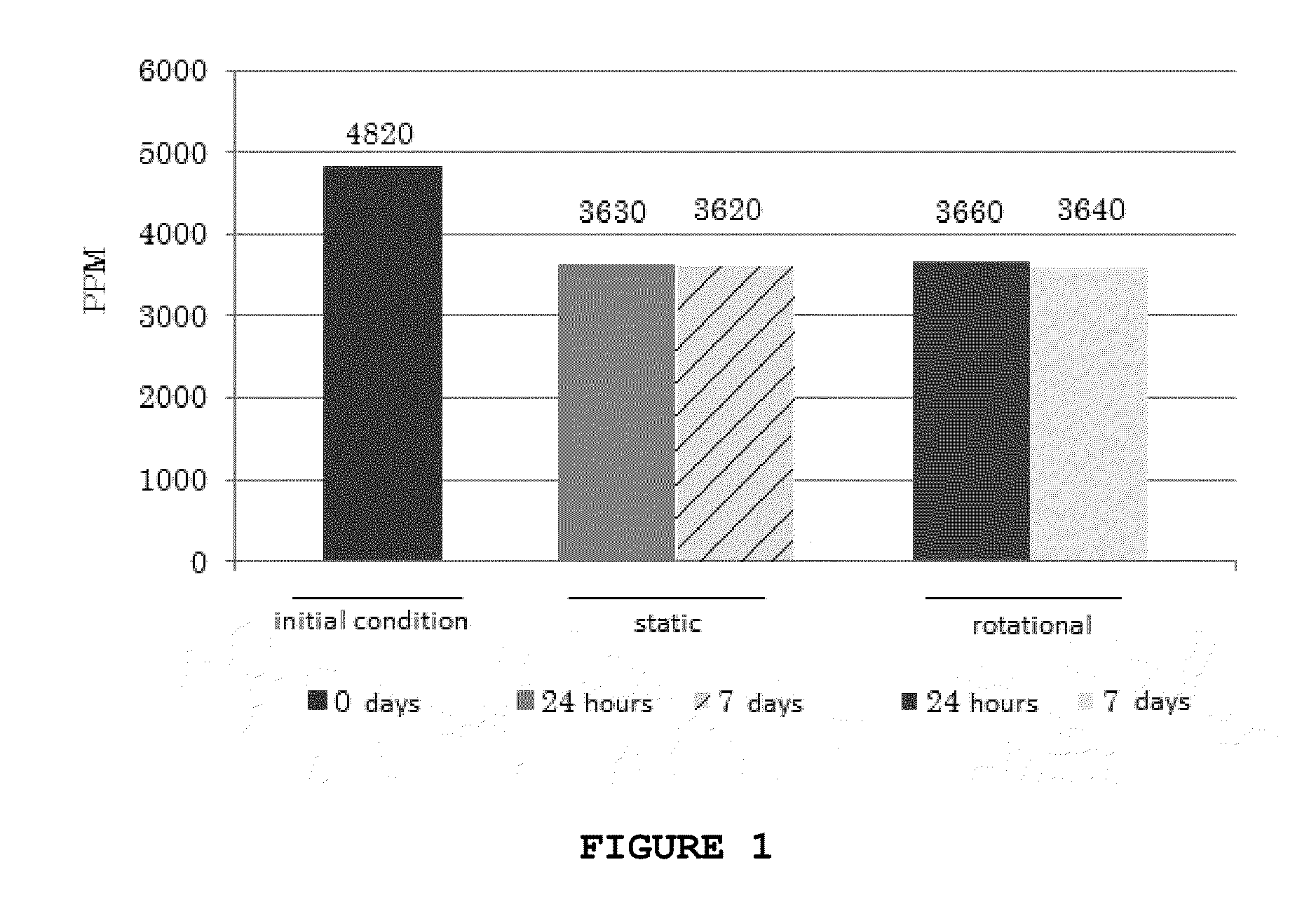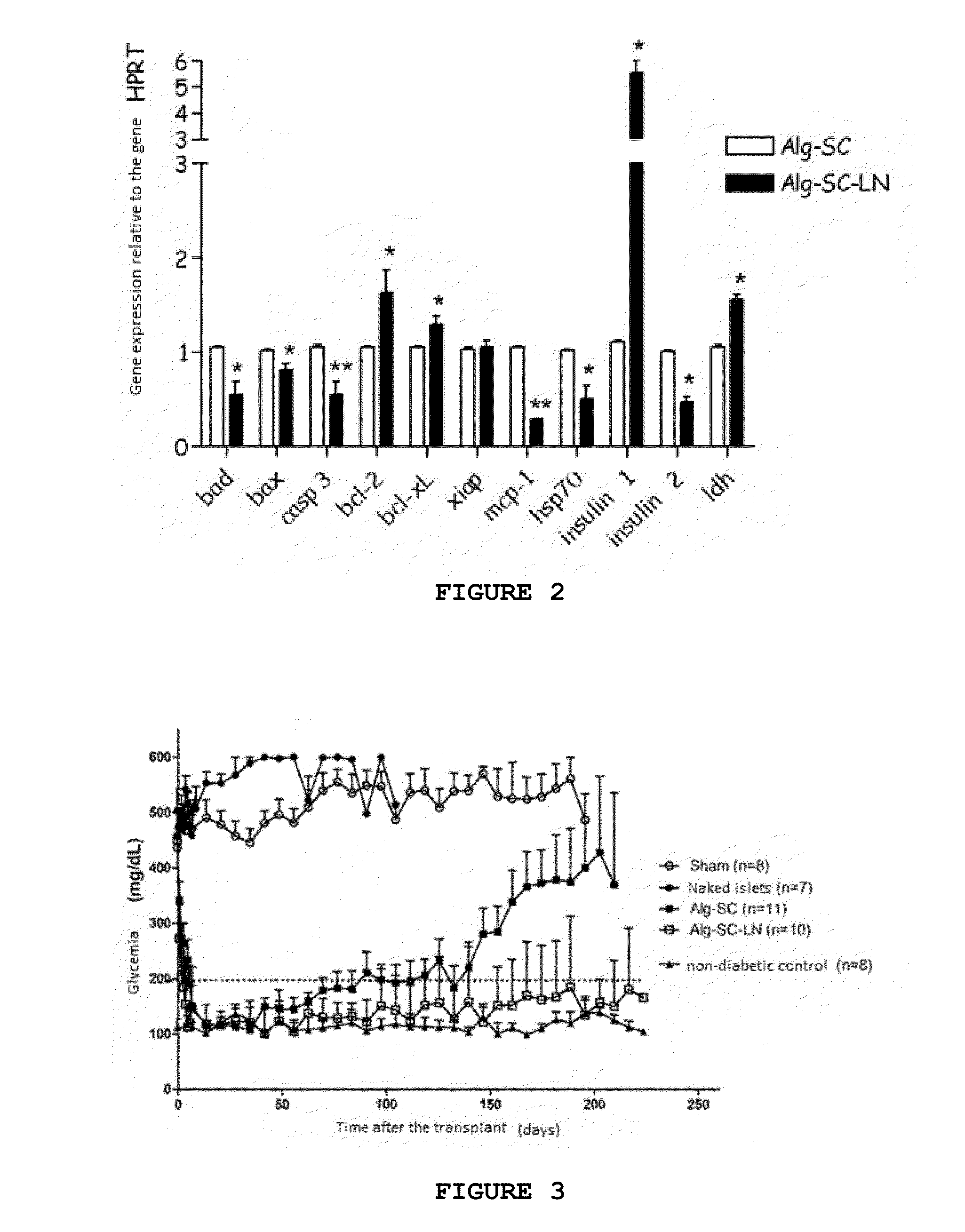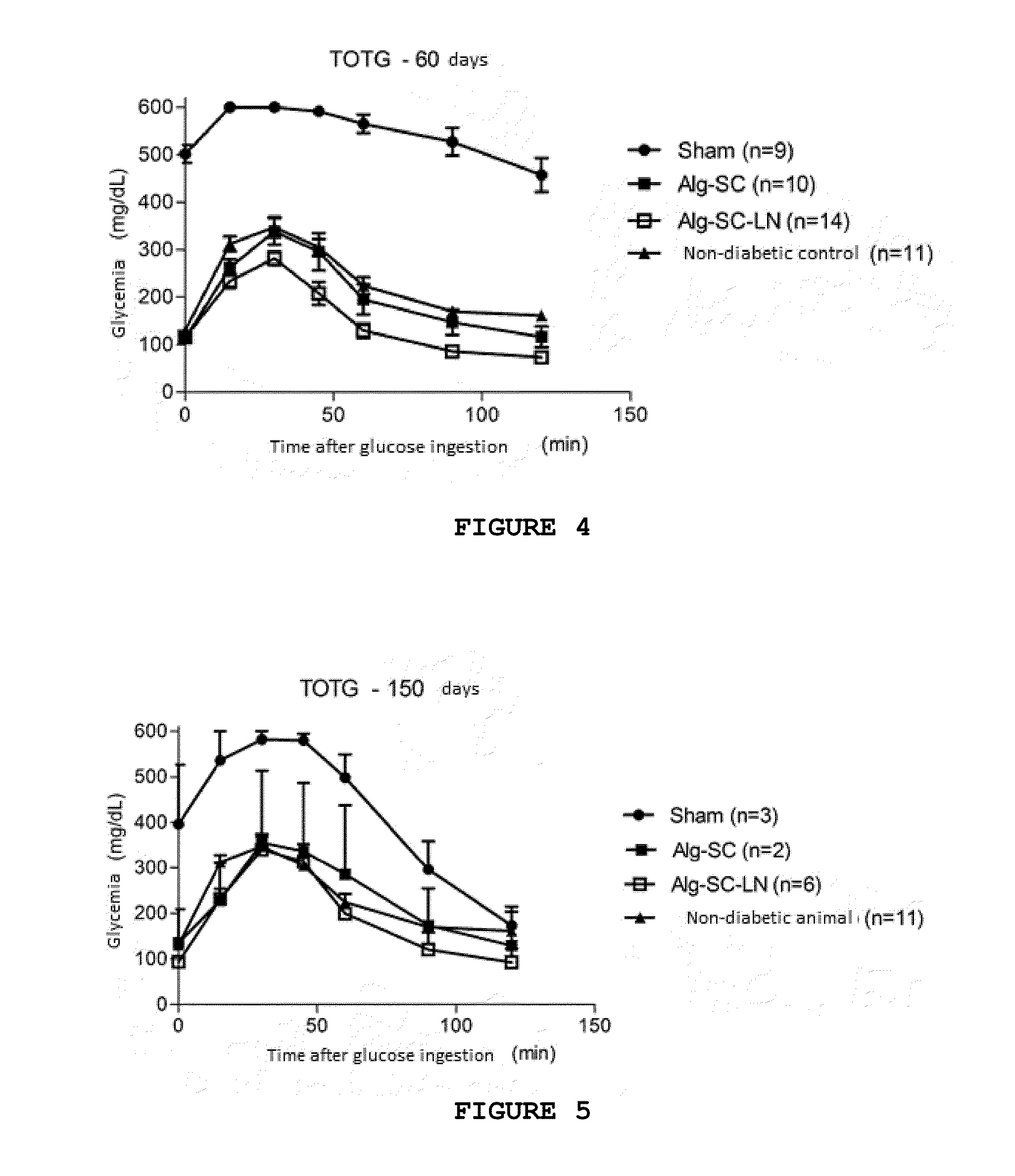Biopolymer Composition for Encapsulating Cells, Method for Producing a Biopolymer Composition for Encapsulating Cells, Method for Promoting Cell Cytoprotection and Use of a Biopolymer Composition for Encapsulating Cells
a technology of encapsulating cells and biopolymer compositions, applied in biochemistry apparatus and processes, immobilised enzymes, enzymes, etc., can solve the problems of rejection of implants, loss of function of transplanted microencapsulated cells, interference with cell function
- Summary
- Abstract
- Description
- Claims
- Application Information
AI Technical Summary
Benefits of technology
Problems solved by technology
Method used
Image
Examples
example 1
Preparation of the Biomaterial of the Biomaterial and Mixed with the Cells Whether to Microencapsulate
[0060]The biopolymer is diluted in NaCl 0.15 mol L−1 to a final concentration of 1.2% alginate. The alginate biopolymer is formed by alginate:chondroitin sulfate in a ratio of 4:1 and laminin-1 is added in this mixture to a final concentration of 10 μg·mL−1. The cell suspension should be carefully and fast homogenized in the solution of biopolymer-NaCl. The gelling solution is 0.02 mol·L−1 Barium Chloride plus 20 mmol·L−1 HEPES (Sigma), pH 7.2.
example 2
Preparation of Microcapsules and Parameters Used to Obtain a Microcapsule with Good Size, Shape and Stability
[0061]10,000 islets are used per mL alginate, laminin, chondroitin sulfate or 1.5×106 cells·mL−1 biopolymer. The capsules were obtained by extruding the solution containing the biomaterial islets (or cells) by a microneedle at a flow rate of 19.9 mL·h−1 controlled by a syringe pump (SP 500 JMS do Brasil, Campinas, Brazil). By applying 2.2 L·min−1 air flow (air medicinal, Air Products Brasil Ltda.) around the needle. After detachment of the needle drop, the microcapsules falls into a polymerization solution (gelling) comprising BaCl2. With the above determined flow it is obtained microcapsules with a diameter of about 700-800 μm.
[0062]The distance between the needle tip and the gelling solution was adjusted to 7.5 cm. At the end of the process, the microcapsules remain in the solution for 5 minutes. After this incubation step, the microcapsules are rapidly filtered and washed...
PUM
| Property | Measurement | Unit |
|---|---|---|
| concentration | aaaaa | aaaaa |
| concentration | aaaaa | aaaaa |
| polydispersity | aaaaa | aaaaa |
Abstract
Description
Claims
Application Information
 Login to View More
Login to View More - R&D
- Intellectual Property
- Life Sciences
- Materials
- Tech Scout
- Unparalleled Data Quality
- Higher Quality Content
- 60% Fewer Hallucinations
Browse by: Latest US Patents, China's latest patents, Technical Efficacy Thesaurus, Application Domain, Technology Topic, Popular Technical Reports.
© 2025 PatSnap. All rights reserved.Legal|Privacy policy|Modern Slavery Act Transparency Statement|Sitemap|About US| Contact US: help@patsnap.com



